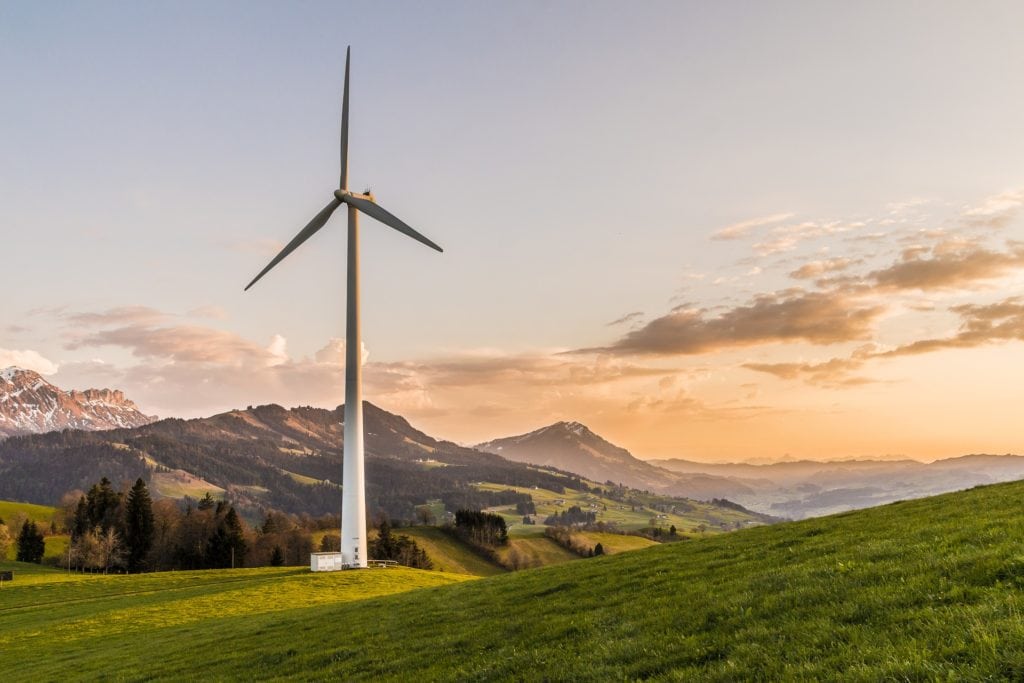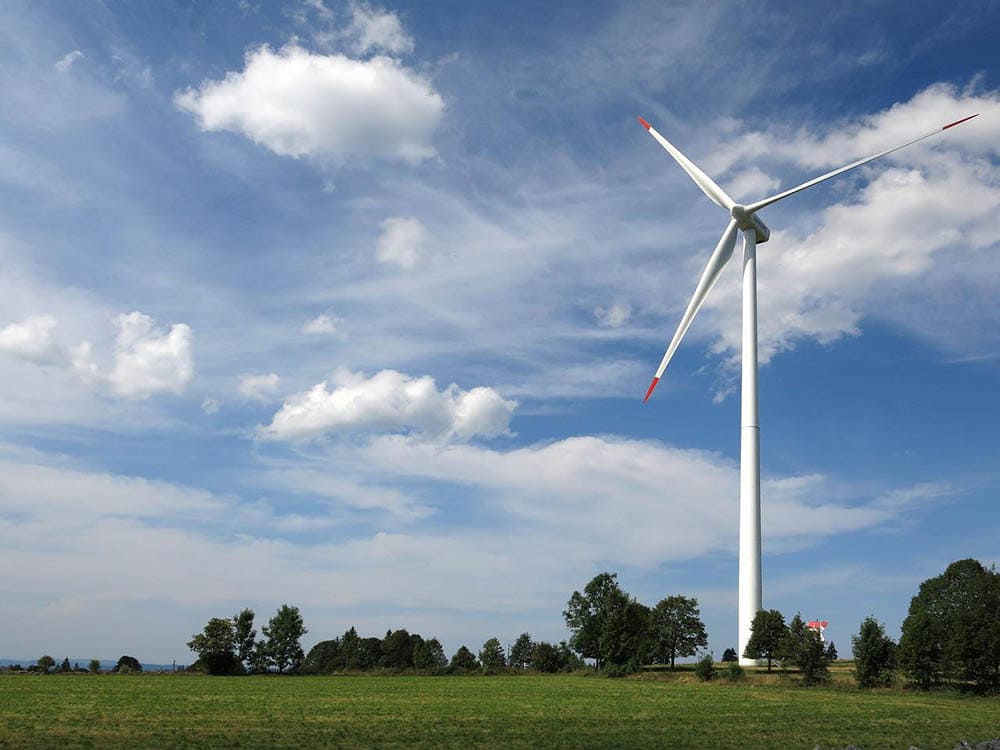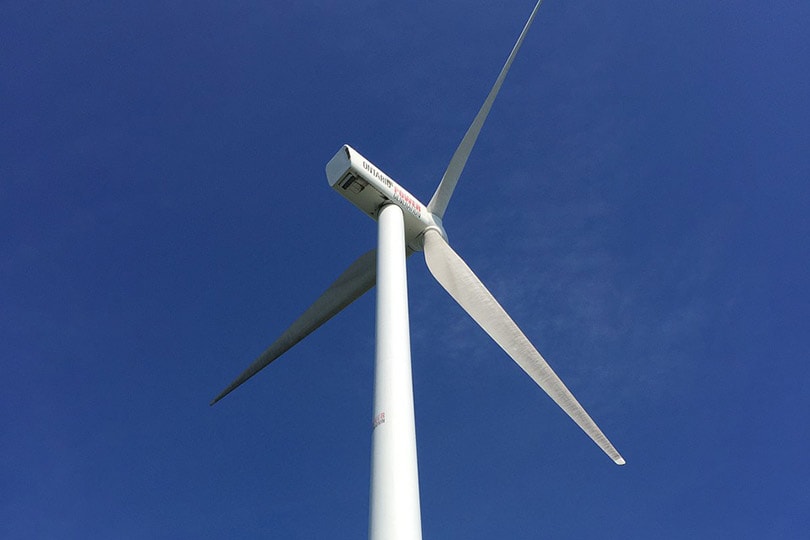How Tall Are Wind Turbines? Manufacturing, Facts & FAQ
-

- Last updated:

Wind turbines are massive structures that have been in use for several decades, reaching high into the sky to take advantage of the consistent winds. Many people imagine small windmills behind someone’s house when they think of wind turbines. On the other hand, industrial wind turbines are massive technological marvels with blades that can easily span hundreds of feet. But how tall are wind turbines?
Wind turbines grow taller each year in search of stronger, more consistent winds.
According to the American Wind Energy Association, the average hub height of utility-scale wind turbines installed in the United States increased from 190 feet to 288 feet between 200 and 2018. The size varies, but typical wind farm towers today stand around 229 feet tall, with blades that are about 164 feet long.
Why Build Taller Turbines?
The size of turbines is already noticeably larger than it was 15 or 20 years ago.
Larger turbines are more cost-effective because the wind blows stronger and more steadily at higher altitudes. Longer turbine blades also catch more wind, which leads to more power, and taller towers allow for longer blades.
The wind also faces fewer obstacles such as trees, hills, and buildings, which makes for a more consistent wind, resulting in more power generated by the turbines.
Air viscosity, density, and wind speed change drastically when altitude is increased. Winds that move at low altitudes create friction with the surface of the ground and significantly slow down the speed. Air density is also affected by the heat radiation from the ground.
Even though wind turbines stand tall as they are, they are still too close to the surface. To reach an altitude that is undisturbed, they would need to stand at least 656–984 feet in height.
Stability and cost are other factors. The layout of having taller turbines may be costly, but in the grand scheme of things, it ends up costing a lot less. The taller the turbines, the more energy that is generated, which means fewer turbines are needed to produce the required amount of power. Overall, they take up less space, are easier to maintain and install, and cost less to build.

Offshore Wind Turbines
Offshore turbines are notably taller with bigger blades because of the higher wind energy at sea. The wind faces fewer obstacles over the sea than it does on land, and the potential for generating power is higher because of the stronger winds.
Offshore turbines need to be stronger and more durable. They need to withstand the powerful waves and wind speeds while supporting bigger blades and a heavier gearbox.
Offshore turbines are larger than they seem. They need to be anchored to the ocean floor, and a large section of their structures is hidden under the water, making it difficult to perceive their height.
Cons of Tall Wind Turbines
While taller wind turbines mean stronger winds and more energy potential, they come with physical constraints. They have a limit to how tall they can be, and the tower that is made from steel can only support a certain amount of weight. If the height of the turbine is increased, then the diameter needs to be increased, resulting in a significantly larger number of materials needed to ensure stability. In the long run, the cost of these turbines is unsustainable.
Building larger turbines is no simple feat. Larger warehouses are needed for massive turbines and as you can imagine, transportation of the turbines is extremely difficult.
As turbines increase in height, aviation standards and the wind power industry may come into conflict as restrictions on height and location may be regulated.
What Is the Tallest Wind Turbine in the US?
The tallest turbine in the United States resides in Randall County, Texas, and it stands alone rising from the sand of the UL Advanced Wind Turbine Test Facility.
The height of the hub is 426.5 feet above the ground. The height of the tip of one of its three blades at its tallest is 653.5 feet and the diameter of the rotor is 446.2 feet.

What Is the Tallest Turbine in The World?
The world’s largest and most powerful turbine, the SG 14-222 DD prototype, has been installed in the Port of Rotterdam in the Netherlands. It has a 14 MW capacity that can be increased to 15 MW by using the company’s Power Boost function and has a rotor diameter of 728 feet.
Turbines in the Making
Here are three common wind turbines currently in production, or scheduled to begin soon, along with their sizes.
MHI Vestas V164-9.5 MW
The MHI Vestas V164 is the world’s largest turbine in production today. The blades alone are approximately 262 feet long, and the overall structure weighs approximately 73,000 pounds. The turbine has been tested in the Irish Sea and has been selected for projects that will begin in mid-2018.
Adwen AD8-180
The Adwen turbine has a blade that is 10% longer than the MHI Vestas V164, and it has been selected for a number of offshore projects in France. The turbine’s rotor spans approximately 600 feet.
GE Haliade 6MW
This turbine was on display at America’s first offshore wind farm: the Block Island Development. The turbine, which has a rotor diameter of about 495 feet, has been chosen to power projects off the coast of France and in the North Sea near Germany.
Final Thoughts
The size of these energy-producing marvels varies, and they are growing taller each year. The average hub height of a US turbine is 229 feet, with the tallest one in the US standing at 426.5 feet!
Offshore turbines are taller than they seem and have larger blades to capture more energy, but they need to be a lot stronger and more durable. Engineers continue to find ways to build taller turbines in order to reach higher altitudes to generate more power.
Featured Image Credit: TeeFarm, Pixabay
Contents


